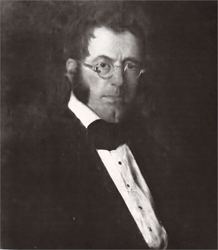Name Whitemarsh Seabrook Education Princeton University | Political party Democratic | |
 | ||
Spouse(s) Margaret Wilkinson Hamilton Died April 16, 1855, Beaufort, South Carolina, United States | ||
Whitemarsh Benjamin Seabrook (June 30, 1793 – April 16, 1855) was the 63rd Governor of South Carolina from 1848 to 1850.
Contents
Early life and career
Seabrook was born on Edisto Island at his family's plantation in and he received his education at the College of New Jersey from which he graduated in 1812. He owned Gun Bluff Plantation on Edisto Island and engaged in agriculture issues of the state. For several years, Seabrook was the president of the South Carolina Agricultural Society and he stressed the need upon the farmers of the state for diversification of crop. In addition, Seabrook wrote the History of the Cotton Plant and A concise view of the critical situation, and future prospects of the slave-holding states, in relation to their coloured population.
Political career
In 1814, at the age of 21, Seabrook gained election to the South Carolina House of Representatives and served until his election to the South Carolina Senate in 1829. After five years in the Senate, the General Assembly elected him as the 36th Lieutenant Governor in 1834. The General Assembly elected Seabrook as Governor in 1848 and he pushed for reform of education in the state. He lamented that only the upper class of South Carolina was provided with education and that the middle and lower classes received almost little if any education. Local officials were even encouraged by Seabrook to pass additional taxes to fund education. Furthermore, Seabrook organized the teachers of the state into the Teachers' Association, but it collapsed after he left office.
Later life
Upon the expiration of his term in 1850, Seabrook returned to his plantation on Edisto Island. He remained active in politics and participated in the Southern Rights Convention of 1852. On April 16, 1855 in Beaufort, Seabrook died and he was interred on his plantation.
